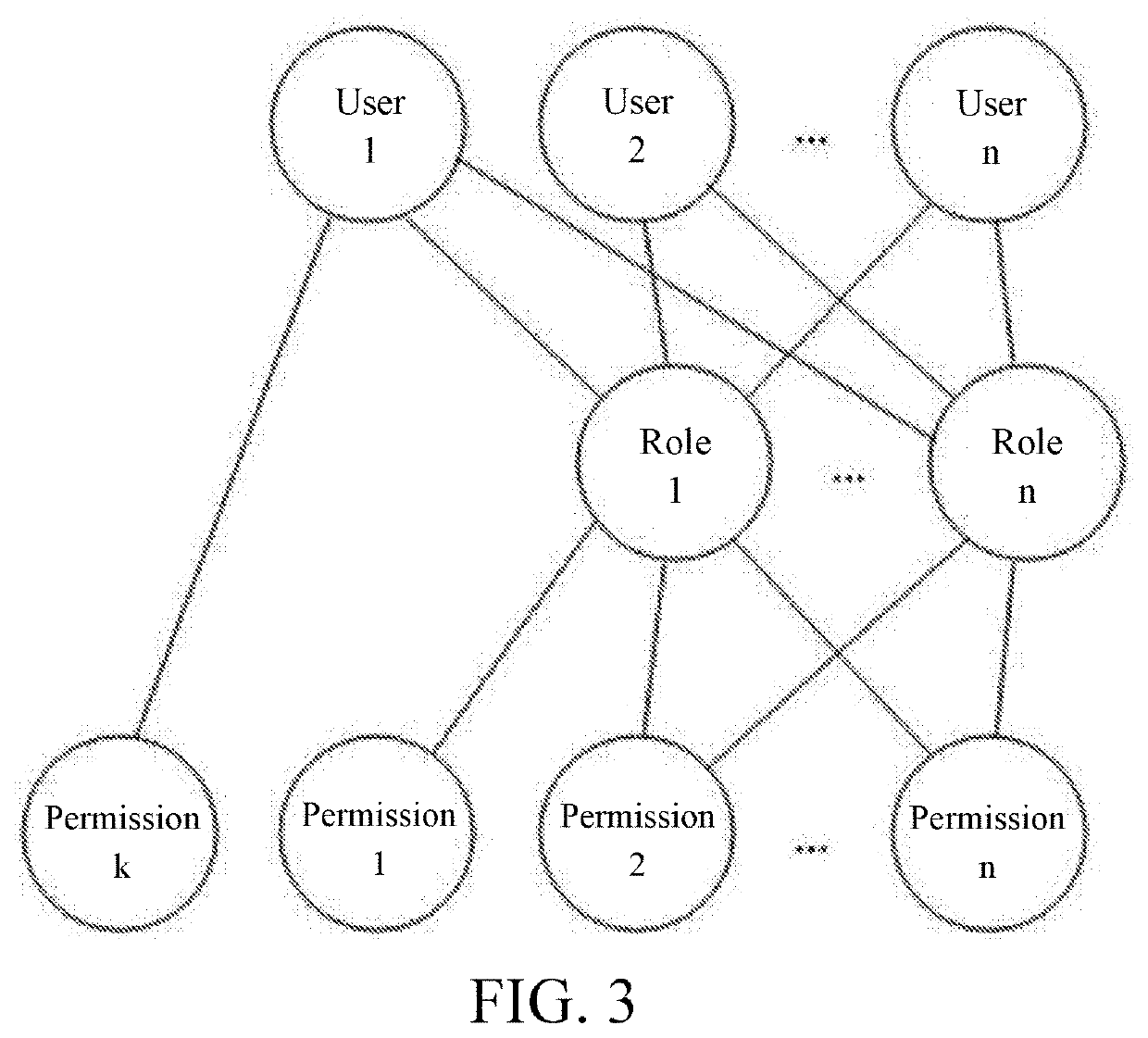Method for setting up approval role according to department by approval node in workflow
a workflow and approval node technology, applied in the field of setting and managing the approval role at an approval, can solve the problems of high flexibility of conventional discretionary access control, low security, and complex management and permissions of database resources, and achieves convenient and rapid operation, improved reliability of workflow, and convenient and rapid operation
- Summary
- Abstract
- Description
- Claims
- Application Information
AI Technical Summary
Benefits of technology
Problems solved by technology
Method used
Image
Examples
embodiment 1
[0045]As shown in FIG. 4, a method for setting up an approval role according to a department by an approval node in a workflow includes: creating departments and roles included in a system organization structure.
[0046]Definition of a role: A role is not of the nature of a group / class / category / post / position / work type or the like, but is of a non-collective nature. The role is unique and is an independent individual. Applied in an enterprise or an institution, the role is equivalent to a post number (the post number herein is not a post, and one post may have multiple employees at the same time, but one post number can only correspond to one employee during the same period).
[0047]For example, in a company system, the following roles may be created: a general manager, a deputy general manager 1, a deputy general manager 2, a manager of Beijing sales department I, a manager of Beijing sales department II, a manager of Beijing sales department III, a Shanghai sales engineer 1, a Shanghai...
embodiment 2
[0057]In this embodiment, setting of an approval role in a leave application workflow is used as an example to illustrate the present invention.
[0058]A company includes an administrative department and a sales department. There are a role A, a role B, and a role C in the sales department, and there are a role D, a role E, and a role F in the administrative department, where the role A is a department supervisor role in the sales department and the role D is a department supervisor role in the administrative department. All applications for leave in the company need to be approved by the administrative department. Setting an approval node in a leave application workflow specifically includes the following steps: creating a sales department and an administrative department, where there are a role A, a role B, and a role C in the sales department, and there are a role D, a role E, and a role F in the administrative department.
[0059]The role A is set as a department supervisor role in t...
embodiment 3
[0064]As shown in FIG. 6, a method for setting up an approval role according to a department by an approval node in a workflow includes: creating departments and roles included in a system organization structure; setting a department supervisor role in each department; selecting (configuring) to set an approval role based on a department; displaying candidate departments when setting an approval node of a workflow; and selecting one or more departments from the candidate departments, where the department supervisor role in the selected department serves as an approval role of the approval node.
PUM
 Login to View More
Login to View More Abstract
Description
Claims
Application Information
 Login to View More
Login to View More - R&D
- Intellectual Property
- Life Sciences
- Materials
- Tech Scout
- Unparalleled Data Quality
- Higher Quality Content
- 60% Fewer Hallucinations
Browse by: Latest US Patents, China's latest patents, Technical Efficacy Thesaurus, Application Domain, Technology Topic, Popular Technical Reports.
© 2025 PatSnap. All rights reserved.Legal|Privacy policy|Modern Slavery Act Transparency Statement|Sitemap|About US| Contact US: help@patsnap.com



